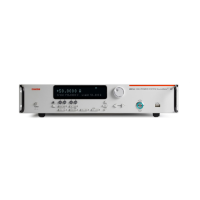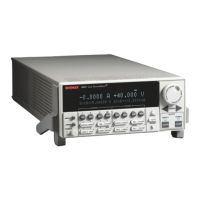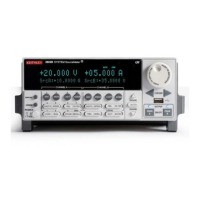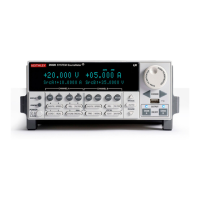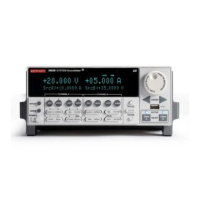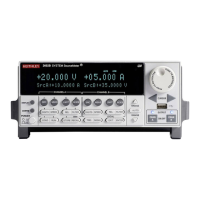Section 3: Functions and features Model 2657A High Power System SourceMeter® Instrument Reference Manual
3-54 2657A-901-01 Rev. B/December 2012
The programming example below illustrates how to have the SMU immediately perform an action the
first time through the trigger model, even if a programmed trigger event does not occur.
-- Immediately sets the arm event detector of SMU A
-- to the detected state.
smua.trigger.arm.set()
-- Sets the Measure Event Detector of SMU A.
smua.trigger.measure.set()
Event detector overruns
If a second trigger event is generated before an event detector clears, the trigger object will generate
a detector overrun. Detector overruns can be checked by reading the overrun attribute of the trigger
object. The attribute is set to true when an overrun occurs. The clear() function can be used to
immediately clear the event detector, discarding any history of previous trigger events. The clear()
function also clears any detector overruns.
Detector overruns are not the same as action overruns that are reported in the status model.
The programming example below illustrates how to check and respond to detector overruns.
testOver = digio.trigger[4].overrun
if testOver == true then
print("Digital I/O overrun occurred.")
end
Examples using interactive triggering
Command interface interactive trigger example
The programming example below illustrates how to clear triggers, turn on the SMU output, and then
enable a 30 second timeout to wait for a command interface trigger. Upon receipt of the trigger, the
Model 2657A performs a voltage reading.
-- Clear any previously detected command interface triggers.
trigger.clear()
-- Turn on output.
smua.source.output = smua.OUTPUT_ON
-- Wait 30 seconds for a command interface trigger.
triggered = trigger.wait(30)
-- Get voltage reading.
reading = smua.measure.v()
-- Send command interface trigger to trigger the measurement.
*TRG
*TRG cannot be used in a script.
NOTE
NOTE
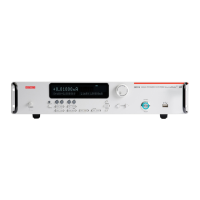
